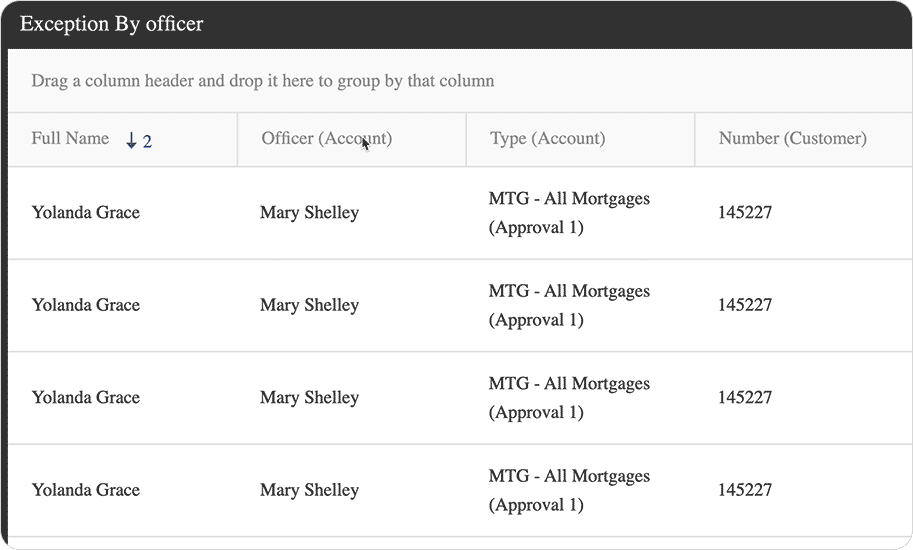Commercial Loan Tracking: Initial vs. Ongoing
Whether you’re a bank or a credit union, it’s important to have solid tracking procedures in place for commercial loans. Unfortunately, the most well-thought-out tracking procedures can fail without the proper supporting infrastructure. Surprisingly, even some of the largest community institutions still rely on manual tracking processes, such as ticklers, spreadsheets, and checklists. In this article, we’ll explore the two main categories of commercial loan document tracking and how technology can streamline both.
Initial Tracking
Before your financial institution lends a dime to a new commercial customer, there are certain document tracking responsibilities that must be attended to. Here are a couple common examples:
Collateral Perfection – Collateral perfection can be a multi-step process, especially when UCCs are involved. Determining which state to file in, searching the proper Secretary of State’s records for existing liens, submitting the filing, and ensuring your lien is properly perfected are tasks that someone at your financial institution must do. Once filed, it’s also important to ensure sufficient reminders are in place so that continuation activities occur prior to expiration.
Customer File Documentation – Your financial institution must also ensure that all relevant customer files are properly organized. This typically includes loan applications, articles of organization, CIP documentation, business financials, tax returns, among many others. Without an integrated document tracking system, it can be overwhelming to keep everything organized. Which checklist should be used for specific loan types? How do you know (for sure) that a document has actually been added to the customer’s file? Simply put, manual tracking via a tickler or spreadsheet causes more confusion than clarity. And, confusion leads to errors, oversights, and costly mistakes. On the other hand, a core-integrated system, such as our AccuAccount platform, simplifies the tracking of upfront documents. As new customers and loans are booked to your core, matching records are automatically created in AccuAccount. Based on the customer, loan, and collateral type, AccuAccount prepopulates document placeholders for what needs to be collected. For example, if the collateral is a titled vehicle, AccuAccount can build document placeholders and exceptions that align with your process.
AccuAccount does the thinking for you, prompting users to take action at exactly the right moment.
Ongoing Monitoring
Obviously, a unique aspect of commercial lending is the importance of ongoing tracking procedures. Financial institutions must implement systems that facilitate the following key business processes:
Monitoring Credit Over the Life of the Loan – A commercial customer’s creditworthiness can change dramatically from one year to the next. Significant fluctuations in cash flow and expenses may impair the client’s ability to repay the loan. Ongoing monitoring of financial statements and tax returns can provide much-needed insights to the institution.
Ongoing Collateral Obligations – As mentioned above, certain types of collateral require ongoing attention. Case in point, UCC filings expire every five years and continuations must be filed in a timely fashion to avoid expiration.
Other Obligations – Flood insurance monitoring, proof of insurance certifications, and other documents must routinely be collected from certain commercial clients. Tracking ongoing obligations with spreadsheets is practically impossible, especially as your financial institution grows. Manual ticklers offer a slightly better option, but they still rely heavily on data entry. Manual data entry creates unnecessary bottlenecks and subjects your bank or credit union to untold risk. Conversely, AccuAccount automates your ongoing document obligations by connecting business loan tracking and imaging under one roof. In addition, AccuAccount’s intuitive reporting dashboard keeps your team on top of current and upcoming exceptions.

Reports can also be configured to arrive in your inbox on a daily, weekly, or monthly basis. AccuAccount’s notice letter creation tool allows you to bypass complicated mail merges and list deduplications. Better yet, you can manage your notice letter templates directly in AccuAccount, saving an additional step. And, as documents are received and scanned in, AccuAccount automatically clears the exception on your behalf. This increases the accuracy of your exception report data, while simultaneously eliminating several administrative tasks. AccuAcount also integrates with the banking industry’s most widely used systems, such as our integration with loan origination systems and AFR’s flood zone determination platform. Our integrations further expedite the document tracking process and free up much-needed capacity at your financial institution.
Automate Your Document Tracking
Commercial document tracking can be complicated, but it doesn’t have to be. Click here to join our next AccuAccount demo and learn how to simplify the management of upfront and ongoing documents.
Be the first to know! Click below to follow us on LinkedIn for news and content updates!








